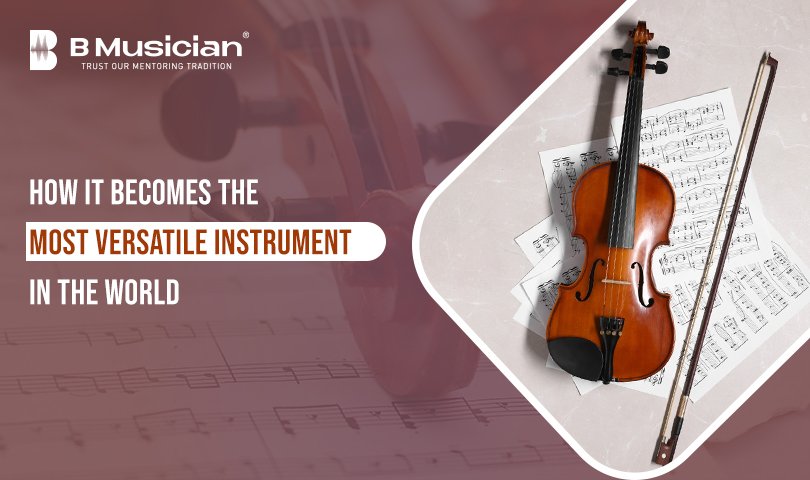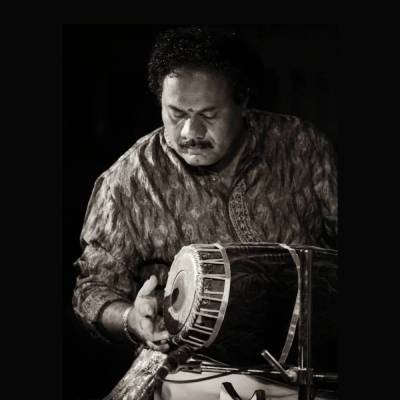Technology and Online music lessons
The violin, often hailed as the “queen of instruments,” has a rich and storied history that spans centuries. Its journey from rudimentary string instruments to the sophisticated marvel we see today is a testament to human ingenuity, artistry, and cultural exchange. Violin, with help of technological integrations and advancements soon took a path where it provided opportunities like violin lessons for beginners, thereby propelling the growth and popularisation of the instrument.
Tracing the Roots: Early Origins of the Violin
The Birth of the Modern Violin
Growth and Global Spread
The violin’s popularity quickly spread across Europe. Its versatility made it a staple in orchestras, chamber music, and solo performances. The Baroque period saw composers like Antonio Vivaldi and Johann Sebastian Bach writing iconic works for the violin, showcasing its expressive potential.
As European colonisation and trade expanded, the violin found its way to other parts of the world. It was embraced and adapted into various musical traditions, such as Indian Carnatic music and Middle Eastern Maqam traditions. By the 19th century, the violin had become a truly global instrument.
Modern Design and Technological Advancements
Why the Violin is the Most Versatile Instrument
| Aspect | Details | Explanation |
|---|---|---|
| Range of Expression | Wide dynamic range and tonal versatility | The violin can produce delicate pianissimo to powerful fortissimo, expressing a vast emotional spectrum from joy to sorrow. |
| Adaptability to Genres | Found in classical, folk, jazz, rock, pop, and world music | The violin’s adaptability allows it to fit seamlessly into diverse musical traditions, from Bach’s fugues to Indian ragas and Celtic reels. |
| Technical Flexibility | Capable of advanced techniques like pizzicato, harmonics, and double stops | These techniques expand the violin’s sound palette, enabling unique textures and effects. |
| Aspect | Details | Explanation |
|---|---|---|
| Ease of Tuning | Four strings allow fine-tuning to different scales and tunings | Violinists can use scordatura (alternate tunings) to adapt the instrument to various musical styles and enhance its expressive range. Jazz violin, Carnatic violin, and Western violin with their vast variety of tuning methods are proof of this concept. |
| Portability | Lightweight and easy to carry | Unlike larger instruments like the piano or cello, the violin is compact, making it ideal for both solo performances and traveling musicians. |
| Solo and Ensemble Roles | Functions equally well as a solo instrument or within ensembles | In orchestras, string quartets, or as a lead in folk or jazz bands, the violin’s voice complements other instruments while also shining independently. |
| Cultural Universality | Integral to many global traditions | The violin has been adopted and modified in various cultures, such as the Indian Carnatic violin and Chinese erhu-inspired adaptations. |
| Acoustic Power | Can project sound in large spaces without amplification | Its design allows the violin to fill concert halls with sound, making it suitable for both intimate and large-scale performances. |
| Evolution of Repertoire | Extensive repertoire spanning centuries, from Baroque to contemporary | Composers like Vivaldi, Beethoven, Paganini, and modern innovators have written for the violin, ensuring its relevance across eras. |
| Technological Compatibility | Works well with amplification and electronic modifications | Electric violins and effects pedals have expanded the violin’s role in modern music genres like rock, electronic, and fusion. |
| Aspect | Details | Explanation |
|---|---|---|
| Emotional Impact | Directly resonates with human emotions | The violin’s timbre closely mimics the human voice, making it deeply moving and relatable to listeners. |
| Virtuosity Showcase | Demonstrates technical brilliance and artistry | Renowned violinists like Niccolò Paganini and Itzhak Perlman have showcased the violin’s ability to perform dazzling and intricate compositions. |
| Improvisational Capacity | Suited for improvisation in jazz, folk, and Indian classical music | The instrument’s flexibility in pitch and tone makes it ideal for spontaneous musical creation. |
| Educational Popularity | Widely taught across the globe | Its accessibility in music education ensures a steady flow of skilled players and continuous cultural significance. |
| Integration in Film and Media | Frequently used in soundtracks to evoke emotion or drama | The violin’s expressive power makes it a staple in cinematic scores, from romantic themes to action sequences. |
The Violin Across Genres
- Classical Music: In Western classical music, the violin is indispensable. From concertos to symphonies, it has been a centrepiece for centuries.
- Carnatic Music: Introduced to South India in the 18th century, the violin seamlessly blended with Carnatic traditions. Pioneers like Shri Baluswamy Dikshitar adapted it to mimic vocal styles, and it became a mainstay in Carnatic concerts.
- Jazz: In the 20th century, jazz musicians like Stéphane Grappelli showcased the violin’s potential in improvisation, making it a key instrument in gypsy jazz.
- Film Music: From Hollywood to Bollywood, the violin has been used to evoke drama, romance, and tension. Iconic soundtracks often feature lush violin sections.
- Folk and World Music: The violin’s adaptability has made it a favourite in Irish, Scottish, Arabic, and Chinese folk traditions, where it is often modified to suit local styles.
- Contemporary and Experimental: Modern artists continue to push the boundaries of violin music, blending it with rock, pop, and electronic genres.
Conclusion
The violin’s evolution from its humble origins to its current status as a universal instrument is remarkable. Its ability to bridge cultures, genres, and centuries underscores its unmatched versatility. Whether it’s a soulful Carnatic raga, a virtuosic classical concerto, or an electrifying jazz improvisation, the violin remains a timeless beacon of musical expression. For those starting their journey with violin lessons for beginners and online violin classes, the instrument offers endless possibilities to explore. From Carnatic violin classes that delve into traditional Indian music to jazz violin classes that emphasise improvisation and creativity, the violin provides a gateway to mastering diverse musical styles and techniques.


















